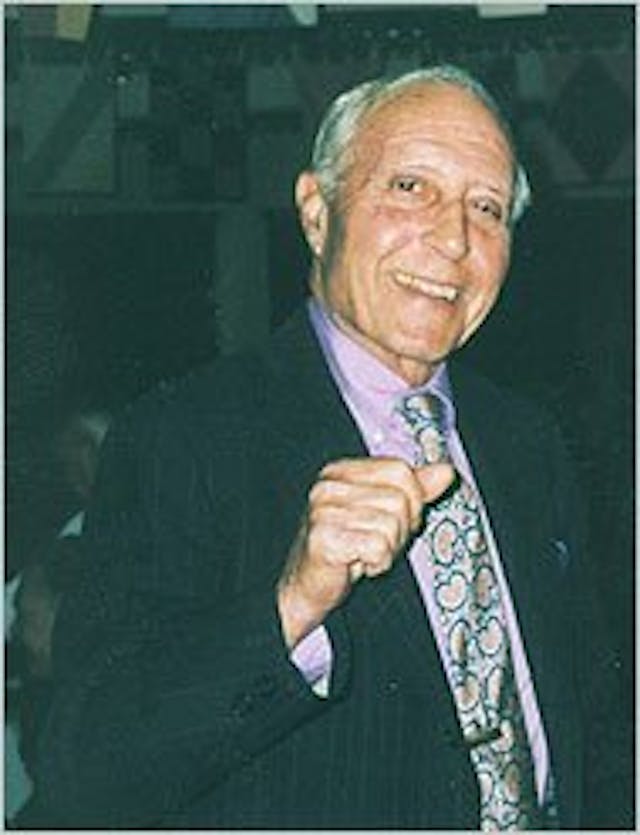
Abortion Pill
This eBay store is selling the abortion pill, putting women in danger
Carole Novielli
·
Investigative·By Carole Novielli
‘Father of abortion rights’: Minorities need abortion to prevent future ‘drug addicts’
Lawrence “Larry” Lader, the “father of the abortion rights movement,” was inspired by eugenicist Planned Parenthood founder, Margaret Sanger, which influenced his own pro-eugenics ideology. Lader was a writer-turned-abortion enthusiast who penned several books on the subject. His 1966 book, “Abortion,” was cited several times in the Roe v. Wade decision.
But Lader was not as direct as Sanger. While Sanger openly used eugenic terms, Lader was more subtle, claiming that society needed to look out for the “protection of the child and its future.” But what Lader really meant was not the future of every child, but the future of the elites, the perfect, and those who were mostly Caucasian.
SUBVERTED: How the sexual revolution hijacked feminism
Here’s what Lader said to WNYC Public Radio (emphasis added):
In other words, I feel that what we have to protect and that we want to give the mother a chance to protect, is the right to bring into the world one, two, three, whatever number of children she can love, protect, educate, care for. That we cannot, as a society, our own country, in the world, today can no longer afford to bring into the world ten, fifteen children, most of whom will be starving not just in India, but often in our own home, will become the flotsam and jetsam of society, will become the drug addict.
Lader then stressed that the people who needed abortion the most were “the percentage of Puerto Ricans, Negroes, other minority groups.”

Lader also contradicted himself, calling the preborn child “potential life” on one hand, while also claiming to be “for the protection of the child.” In his book, “Abortion,” Lader sounded eerily similar to Sanger in her promotion of eugenics — the idea that certain people are “more fit” than others, and that these criteria can decide who should or should not live. During that previously mentioned 1966 WNYC discussion, Lader called eugenic protection acts “humanitarian.”

Article continues below
Dear Reader,
In 2026, Live Action is heading straight where the battle is fiercest: college campuses.
We have a bold initiative to establish 100 Live Action campus chapters within the next year, and your partnership will make it a success!
Your support today will help train and equip young leaders, bring Live Action’s educational content into academic environments, host on-campus events and debates, and empower students to challenge the pro-abortion status quo with truth and compassion.
Invest in pro-life grassroots outreach and cultural formation with your DOUBLED year-end gift!
Lader had conspired with Bernard Nathanson to use the women’s movement of the 1960s as the perfect vehicle to push an abortion legalization agenda. In her book, “Subverted,” author Sue Ellen Browder describes Lader as being adamant that the women’s movement was key to decriminalizing abortion. Browder quotes Lader telling Nathanson at a NARAL strategy meeting, “We’ve got to keep the women out front… and some Blacks. Black women especially. Why are they so damn slow to see the importance of this whole movement to themselves?”
READ: Planned Parenthood raises abortion pill price in poor, minority community
By 1967, Lader’s plan had come to fruition, when feminist icon Betty Friedan brought the abortion plank to a vote in her National Organization for Women (NOW) organization, and it was adopted. As a result, one-third of NOW members left the group. “There was actually a night – and it took me many years to find this night… when abortion was inserted into the women’s movement,” Browder told Live Action President Lila Rose in an interview. She continued:
That night, it was wild. There were eight rights that they voted on that night and most of them, six of them, passed unanimously. Rights we would all agree on. Women should have equal pay for equal work, women should not be fired for being pregnant, women should have equal access to educational opportunities, these are all things that everybody agrees on today.
There were only two rights that night that they fought over. One was Equal Rights Amendment. Now, why did they fight over that? Well, one woman who was very articulate said — and she was a civil rights attorney — that human rights are indivisible. And if you can separate women’s rights out from other people’s rights, you’ve destroyed a lot of things. The last right to be fought over that night, and they fought until almost midnight — that was the abortion right. It was wild. People were screaming. Now this is the founders of feminism in the 1960s, this is not a bunch of radical anti-abortions. These are the feminists fighting over abortion. And, some of the things they said in that meeting- because I got the minutes to the meeting, were things that people are seeing today.
One person said, “I’m against murder.”
There were a lot of people opposed. In fact, they were so opposed that at least one-third of those women walked out and later resigned from NOW.… And so, what you had there that night — behind the scenes — it has never been reported except in this book, Subverted, for the first time, is that you had pro-life feminists leaving the National Organization for Women, and pro-abortion feminists staying.
By the late 1960s, Lader had jumped into the abortion fight with both feet, joining Nathanson and Friedan, among others, to found NARAL (or as it was known then, the National Association for the Repeal of Abortion Laws) and served as chair of the pro-abortion group’s medical committee.
Live Action News is pro-life news and commentary from a pro-life perspective.
Contact editor@liveaction.org for questions, corrections, or if you are seeking permission to reprint any Live Action News content.
Guest Articles: To submit a guest article to Live Action News, email editor@liveaction.org with an attached Word document of 800-1000 words. Please also attach any photos relevant to your submission if applicable. If your submission is accepted for publication, you will be notified within three weeks. Guest articles are not compensated (see our Open License Agreement). Thank you for your interest in Live Action News!

Abortion Pill
Carole Novielli
·
Investigative
Carole Novielli
·
Investigative
Carole Novielli
·
Investigative
Nancy Flanders
·
Investigative
Nancy Flanders
·
Abortion Pill
Carole Novielli
·
Abortion Pill
Carole Novielli
·
Investigative
Carole Novielli
·
Abortion Pill
Carole Novielli
·
Investigative
Carole Novielli
·